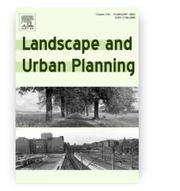Park lighting after dark – is it a route or a place? How people feel in park nightscapes (experiment)
Aleksandra Lis; Magdalena Zienowicz; Zygmunt Kąck; Paweł Iwankowski; Dorota Kukowska; Vlada Shestak
Landscape and Urban Planning
Ministerial score = 200.0
Journal Impact Factor (2023) = 9.1 (Q1)
 The objective of our study was to verify: (1) whether adding ambient lighting in addition to path lighting has a positive impact on preferences, sense of safety and related feelings experienced by park visitors after dusk (H1) and whether this impact is differentiated by the features of the space (H2); (2) what features of the park space may influence the feelings tested (RQ1). For this purpose, we conducted an experiment in the Botanical Garden in Wrocław, where 114 study participants – randomly divided into two groups (experimental and control) – assessed nightscapes based on 13 variables (feelings). The experimental factor was the addition of ambient lighting (in addition to path lighting also present for the control group). The experiment was based on assessments made in three different places in the park – an open space, semi-open space and non-closed space. Thanks to this, we were able to check whether the features of the space differentiate the effects of the experimental factor and then consider their impact on people's feelings. The research found that the impact of the experimental factor (ambient light) is not obvious – it was only apparent in some cases. This factor increased preference for corridor landscapes (semi-open and semi-closed space), but lowered preference in the open landscape. The experimental factor had the strongest effects in the semi-closed, least lit space, and enhanced preferences, surprise and fascination. Moreover, comparison of the ratings of these three places showed that some spaces were rated as the safest while others were assessed as the most attractive. The safest turned out to be the semi-open space with typical park lighting, with the highest path illumination intensity, whereas the least safe was the semi-closed space with the least lighting. When it came to most of the other dimensions related to attractiveness and desire to stay in the area (mystery, contact with the surroundings, willingness to spend time there, surprise, fascination and contemplation), the place with an open view, visually attractive landscape and subtle linear point lighting was rated the highest. The remaining spaces were rated lower. The findings of the experiment indicate that (1) adding light does not always increase preference for a particular space – sometimes it lowers it, thus indicating the benefits of darkness and natural night light in park landscapes; (2) there are differences between the features of safe nightscapes and attractive and leisurely landscapes.
The objective of our study was to verify: (1) whether adding ambient lighting in addition to path lighting has a positive impact on preferences, sense of safety and related feelings experienced by park visitors after dusk (H1) and whether this impact is differentiated by the features of the space (H2); (2) what features of the park space may influence the feelings tested (RQ1). For this purpose, we conducted an experiment in the Botanical Garden in Wrocław, where 114 study participants – randomly divided into two groups (experimental and control) – assessed nightscapes based on 13 variables (feelings). The experimental factor was the addition of ambient lighting (in addition to path lighting also present for the control group). The experiment was based on assessments made in three different places in the park – an open space, semi-open space and non-closed space. Thanks to this, we were able to check whether the features of the space differentiate the effects of the experimental factor and then consider their impact on people's feelings. The research found that the impact of the experimental factor (ambient light) is not obvious – it was only apparent in some cases. This factor increased preference for corridor landscapes (semi-open and semi-closed space), but lowered preference in the open landscape. The experimental factor had the strongest effects in the semi-closed, least lit space, and enhanced preferences, surprise and fascination. Moreover, comparison of the ratings of these three places showed that some spaces were rated as the safest while others were assessed as the most attractive. The safest turned out to be the semi-open space with typical park lighting, with the highest path illumination intensity, whereas the least safe was the semi-closed space with the least lighting. When it came to most of the other dimensions related to attractiveness and desire to stay in the area (mystery, contact with the surroundings, willingness to spend time there, surprise, fascination and contemplation), the place with an open view, visually attractive landscape and subtle linear point lighting was rated the highest. The remaining spaces were rated lower. The findings of the experiment indicate that (1) adding light does not always increase preference for a particular space – sometimes it lowers it, thus indicating the benefits of darkness and natural night light in park landscapes; (2) there are differences between the features of safe nightscapes and attractive and leisurely landscapes.
DOI:10.1016/j.landurbplan.2024.105098









